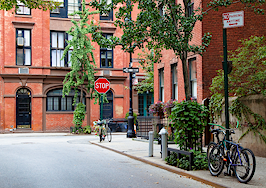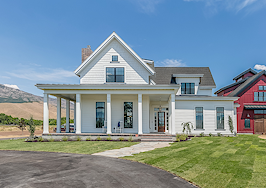In the 2010s, two housing styles competed with each other. Unusually large homes, so-called McMansions, became commonplace across the country. This colloquial term refers to an oversized house, often squeezed onto a small lot, with very little surrounding property.
At the same time, in reaction to these overscale structures, tiny houses (homes of 500 square feet or less) came into being. Buyers of these homes were responding to overproduced houses with excessive features and redundant spaces.
Buyers of tiny houses, which can appear to be children’s playhouses or backyard sheds, made use of open plans, sleeping lofts and small bathrooms. Compact and energy-efficient, younger, first-time homebuyers embraced this style.
According to the National Association of Home Builders, or NAHB, the average 2010 house had between 2,000 and 2,200 square feet. The majority of these houses had two stories, at least three bedrooms, and often more. Two and a half bathrooms were the norm, and space to park two to three cars was average.
Both central air conditioning and fireplaces were present in new homes constructed in 2010. Interiors had open floorplans with flexible, multipurpose spaces. At the beginning of the decade, there was a surplus of houses on the market, but by 2011, with construction slowing and foreclosures up, the inventory was absorbed.
Smart home options in newer homes
The term “smart homes‘ became part of our vocabulary in 2010 and remains until the present. The ability to control heating, cooling, lighting, security and sound from one central location was introduced as technology and home computers became readily available.
As this technology became more advanced, homeowners sought features like the ability to control window treatments, including lowering shades and closing blinds. These features were all in the name of energy efficiency and being “green” in an attempt to conserve resources.
Wi-Fi security, which allowed homeowners to view the exterior of their house or property or who was at their front door, was part of the new smart technology. This high-tech world opened up several new options to homeowners, which real estate agents should be familiar with. One network allows high-tech savvy homeowners to set multiple lighting and cooling levels from one central keyboard and one location.
More advanced technology allows homeowners to monitor both inside and outside their homes from remote locations. Both voice and wireless phones give homeowners power over their home’s technology. While in bed, a clever homeowner can turn off interior and exterior lights, adjust temperatures inside, and even light a pathway to the bathroom in the middle of the night.
Home theater is another area where high-tech advances are in demand. Currently, there is a debate about wireless speakers versus traditionally wired speakers. Technology advances every day, and buyers may have very specific ideas about movie and television sound in their home theaters. Currently, the conclusion is that a combination of both wireless and wired speakers will provide the most realistic sound quality.
LEED, which stands for Leadership in Energy and Environmental Design, became a certification in the early 1990s. Houses, businesses, and architectural and design firms work to achieve LEED certification, which makes structures attractive to buyers and end users as they are conscious of energy efficiency and use.
Advances in technology continue daily. Refrigerators can be programmed to notify us if we have no more milk and order a replacement to be delivered. No one expects real estate agents to be tech wizards, but awareness of these features can be invaluable in understanding buyer needs.
How Realtors can stay informed about changing home styles
As a smart, informed Realtor, know that these high-tech home systems require monitoring and updating. Services are available to homeowners when they purchase up-to-the-minute systems to aid in their maintenance. Again, Realtors need only know the resources and that these services are available to satisfy their clients.
Gerard Splendore is a licensed associate real estate broker with Warburg Realty in New York. Connect with him on LinkedIn.













